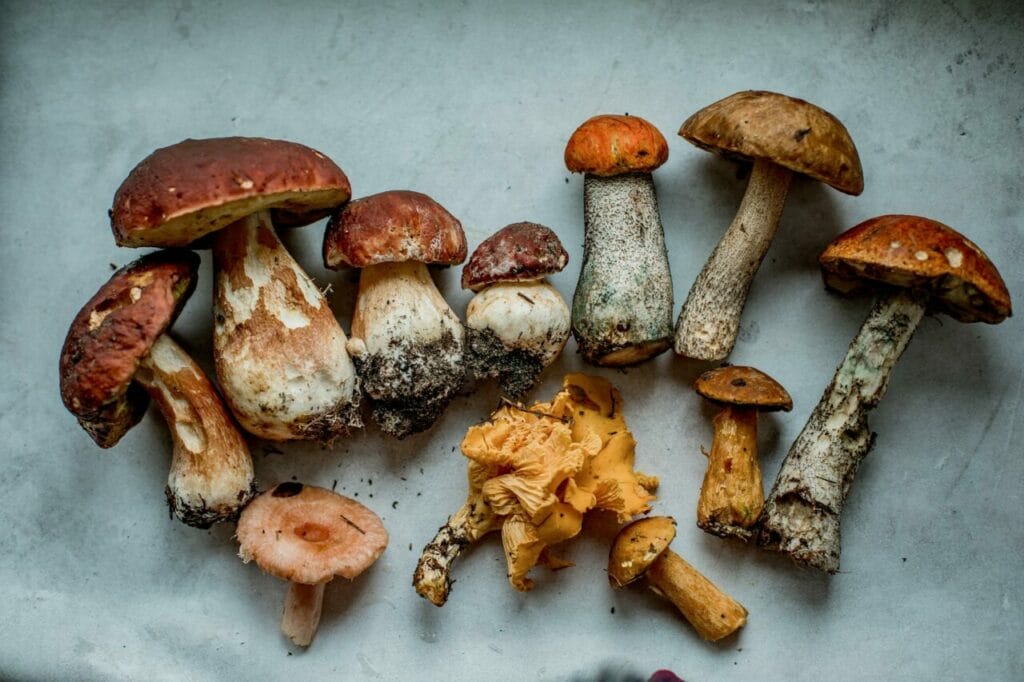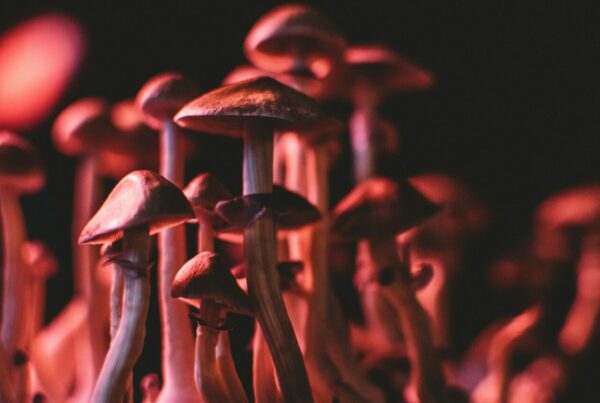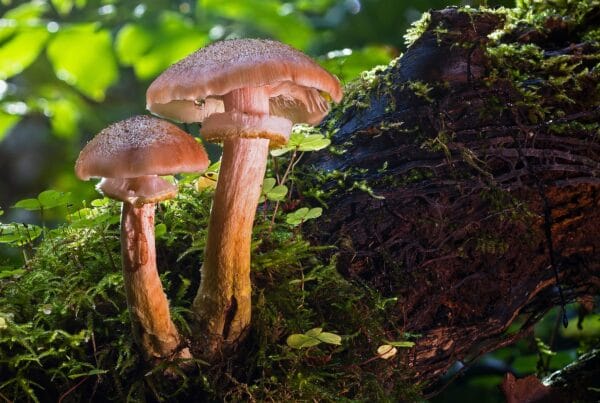Common approaches to the treatment of anxiety often involve therapy and medication. However, not all individuals find these methods effective due to the potential for adverse side effects. These issues have sparked a growing interest in alternative treatments, such as psychedelic therapy, which employs substances like “magic mushrooms Montreal” and others.
Welcome to your ultimate destination to buy psychedelics online in Canada. We provide quick, secure, and confidential services.
[toc]Key Takeaways:
- Psychedelic therapy merges the healing power of psychedelic substances with traditional talk therapy to facilitate the healing process.
- Psychedelic therapy can augment emotional health and improve the quality of life via spiritual journeys.
- The integration process is a vital method in psychedelic therapy intended to ensure the enduring effectiveness of the therapy session.

Statistics on Anxiety Disorders in Canada
The 2022 Mental Health and Access to Care Survey data reveals a concerning escalation in the prevalence of anxiety disorders in Canada. The percentage of Canadians aged 15 and older diagnosed with generalized anxiety disorder in the 12 months before the survey has risen from 2.6% in 2012 to 5.2% in 2022.
Contrasting Traditional Treatment and Psychedelic Therapy
Conventional treatments for anxiety disorders typically involve a combination of psychotherapy and medication. Psychotherapy, also known as talk therapy, is a collaborative process between a therapist and the patient to mitigate anxiety symptoms.
On the other hand, anxiety medications work by tailoring treatment to the specific type of anxiety disorder and considering any concurrent mental or physical health conditions. Although treatment might vary based on individual circumstances, psychotherapy and medication are the basic approaches.
In psychedelic therapy, sessions are unique as they incorporate one or two doses of a psychedelic substance, along with other therapeutic
Techniques:
The Application of Psychedelics in Therapy
Psychedelic therapy leverages the therapeutic benefits of psychedelic substances to enhance the healing process. Identified by their hallucinogenic properties, these substances have been integral to holistic medicine and spiritual rituals in various cultures for millennia.
The primary substances used in this type of therapy are Lysergic acid diethylamide (LSD) and psilocybin. LSD induces alterations in mood, perception, and consciousness. Psilocybin, as mentioned on the Health Canada website, is the active ingredient in magic mushrooms. Consuming these mushrooms can trigger sensory experiences such as visual, auditory, or tactile hallucinations.
Determining the Dosage for Three Sessions
In psychedelic therapy, specialists assess patients to determine the appropriate dosage of psilocybin for their sessions. The dosage can differ between patients, some starting with moderate levels, while others may tolerate higher amounts. The therapy usually consists of one to three sessions, each ranging from six to eight hours and scheduled several weeks apart. This regimen differs from traditional medications which typically require daily use until a healthcare professional advises otherwise.
Experiencing Spiritual and Transformational Changes
Unlike anxiety medications, which are designed to manage symptoms, psychedelic therapy can induce transformative visions or feelings of divine connection. This therapy aims to treat the root causes of the condition and can significantly impact emotional well-being and quality of life.
The immersive experiences can yield profound realizations, heightened self-awareness, and better emotional processing. These effects can facilitate personal development, inspire positive behavior modifications, and enhance overall mental health.
Outcomes
| Expanded Consciousness | Altered states of consciousness provide a renewed outlook on the world. | This increased awareness often leads to the following: Deep insightsEpiphaniesImproved self-understanding and environmental comprehension |
| Emotional Healing | Encourages emotional healing by offering a platform to face and process unresolved trauma, grief, or emotional turmoil. | This process assists in:Unearthing deeply suppressed emotionsReleasing emotional constraintsPromoting emotional health |
| Increased Self-Awareness | Enhances the connection between sensory brain regions while reducing connectivity within the default mode network. This network integrates regions of the brain that are interconnected, responsible for self-focused thoughts and our subjective perception of self.” | These regions help to: Modify negative thought patterns, beliefs, and habitual behaviours. They empower users to gain profound insights into their authentic selves, motivations, and interpersonal interactions. |
Somatic Therapy
Somatic therapy, while not commonly associated with psychedelic therapy, is garnering interest for its potential benefits. This body-oriented approach explores the connection between the mind and body. It is based on the belief that past traumas can result in sensations becoming trapped in the body. Somatic therapists help individuals identify these bodily sensations and use therapeutic methods to alleviate this tension.
Integration
This offers a framework for clients to gain clarity, acquire perspective, and cultivate wisdom from their psychedelic experiences. The transformative journey unfolds during integration sessions between the therapist and the client, and through the client’s active involvement outside of psychedelic explorations. Integration enhances the transformative impact of psychedelics through active engagement with surfaced insights and emotional revelations.
Types of Integration
- Journaling. Documenting experiences allows individuals to solidify memories for easier recall in the future. It also enables clients to analyze their experiences from various perspectives to uncover diverse interpretations, implications, and connections.
- Art. This provides an effective way to capture the complex emotions and feelings of a psychedelic journey in a creative and visually expressive form.
- Practicing Nature-based Approaches. These can be as simple as mindful walks in the woods or seeking tranquility beside a calm body of water. Therapists can help clients recognize the intricate patterns within nature or suggest using natural elements like plants, stones, water, and candles as grounding tools.
- Engaging in Integration Groups. Group sessions with individuals who have undergone similar experiences offer a valuable opportunity for reflection, support, and connection. The power of psychedelic therapy to foster a sense of interdependence and shared understanding beyond individual limits is fundamental.
The Significance of These Techniques in Treating Anxiety
The basic pharmacological principle underpinning all psychedelics is their ability to act as agonists, or activators, of serotonin (5-HT) 2A
Psychedelics like psilocybin bind to the brain’s serotonin 2A receptor, playing a significant role in research. A critical area of study is their effect on the brain’s default mode network, which is typically linked with repetitive thoughts and is associated with conditions such as depression and anxiety disorders. Treatment can drastically reduce anxiety levels, with effects lasting up to 12 months after treatment.
After a psilocybin session, which often includes profound spiritual experiences, the patient participates in a dialogue with their therapist. In these psychotherapy sessions, trained health professionals aim to listen to the patient attentively. They also employ specific practices and methods to enhance the positive effects of the treatment.
All these techniques collectively assist those suffering from anxiety in attaining long-term relief in fewer sessions compared to traditional treatments.
Revolutionize Your World, One Session at a Time
Many people rely on standard treatments for anxiety, but not everyone finds them effective or satisfying. Psychedelic therapy provides an alternative, employing distinctive methods that can trigger transformative experiences. These techniques work together to yield profound, lasting outcomes—sometimes for up to a year after only one to three sessions.
Beyond improving mental health, this therapy could also result in significant cost savings for patients. Ready to discover a new path to wellbeing? Explore the potential of psychedelic therapy with Schedule35 Canada.
Frequently Asked Questions
Is a particular type of magic mushroom used for psychedelic therapy?
In studies of psychedelic-assisted therapy, it’s common to overlook specifying the type of mushroom used. Psilocybe cubensis is generally the preferred choice.
Online magic mushroom dispensaries provide a variety of strains to suit different preferences. You’re free to choose any strain to experience the therapeutic effects of psychedelics. However, be cautious and choose a reliable vendor to avoid obtaining unsafe magic mushrooms from dubious sources.
What is the duration of psychedelic therapy?
Psychedelic therapy comprises several stages and its length can differ. A single session in which the psychedelic is ingested lasts between 4 to 8 hours. The entire therapy process, which includes preparation, the session, and subsequent discussions, can span from a few weeks to several months.
As for long-term effects, many individuals report improvements in their mental health for multiple months or even up to a In just a single year, significant progress can be achieved after only a few therapy sessions.
Several sessions are typically included.
Does a therapist guide the patient on their spiritual journey?
During the therapy process, professional therapists or other staff members often guide the patient. Studies show that Spiritual Health Practitioners (SHPs) offer distinctive and precious insights to improve the wellness of participants and support their advancement during a spiritual journey. Some people prefer to seek help from an SHP, while others rely on a therapist or specialist who is readily available.
Do the “set and setting” play a role in psychedelic therapy?
Without a doubt, both the individual’s mindset (set) and the physical surroundings (setting) are vital in safely facilitating spiritual experiences throughout a psychedelic therapy session. The person’s mental state can greatly influence their spiritual journey, both before and during the therapy session. The course and intensity of the experience are influenced by factors such as personal beliefs, expectations, emotional states, and intentions.
About the Authors:
Franklin King, IV, MD. and Rebecca Hammond, M.D.
Related Articles:





